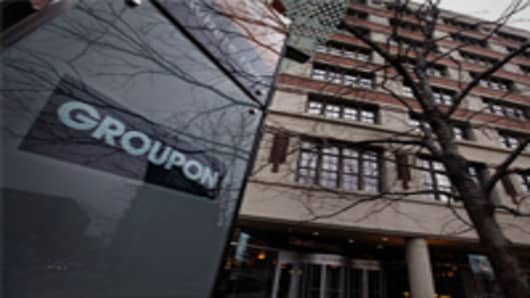You might think that this column is about Groupon.com, the white-hot Web site whose coupons save you 50 to 90 percent at local businesses. But it’s not. It’s about psychology.
Each day, Groupon offers for sale a deep-discount coupon from a business in your town. It might be a $25 coupon that buys you a $50 bike tune-up, or a $40 coupon for a $90 massage, or $25 for $100 worth of fitness classes. The coupons aren’t actually distributed until a critical mass of people (50, for example) have clicked “Buy.” After all, shopkeepers can’t afford discounts that steep unless there’s something in it for them.
If not enough people express interest, the deal dies. No coupons are issued, and nobody’s out a cent.
Groupon is, therefore, a huge win-win-win. You save eyebrow-raising amounts of money. Local businesses pick up a landslide of new customers overnight without doing a lick of marketing on their own (a Phoenix aquarium, for example, sold 10,000 tickets in 24 hours). And Groupon collects half the money from those coupons. No wonder it became profitable after only seven months.
Now, this concept — Internet-organized group buying — has been tried many times before. Remember MobShop? Mercato? LetsBuyIt? They all worked, in principle, the same way.
But Groupon is suddenly everywhere you look — in the headlines, on Facebook, in dinnertime conversations. The company says that it operates in 175 North American cities and 500 overseas, has 54 million members and has saved them $1.6 billion so far. In fact, Groupon is the fastest-growing Web company in history, having attained a $1.5 billion value in only 18 months.
(On the other hand, not all of the dinnertime conversation about Groupon is positive. The company’s SuperBowl TV ads last weekend backfired. One seemed to belittle the oppression of Tibetans under Chinese rule — “The people of Tibet are in trouble. Their very culture is in jeopardy. But they still whip up an amazing fish curry!”— and struck many viewers as juvenile and insensitive.)
Frankly, I couldn’t understand the big deal about Groupon. Why is it such a superstar when so many competitors labor in obscurity?
The answer: clever psychology.
First of all, Groupon’s sales staff tries to cultivate deals that suit the audience in each city. If you’re in San Francisco, you get offers for Segway tours of vineyards, flying lessons and skateboarding gear. In New York City, you’re more likely to see huge discounts on music lessons, theater tickets and interesting restaurants. In most cities, you’re likely to spot lots of deals for spas and cosmetic surgery, which hints at the upscale female customers who constitute Groupon’s biggest buyers.
In suburban Connecticut, where I live, I saw offers like “$10 for $20 worth” of Italian food at a restaurant nearby, “$15 for $30 worth of dry cleaning,” and “$10 for $20 worth” of goods at Barnes & Noble . Since that’s all stuff I’d buy anyway, I took the plunge. I bought the Barnes & Noble coupon and the restaurant coupon.
A few hours later, I received my coupons by e-mail. They pointed out that I could avoid printing the coupons if I used the free Groupon app for iPhone or Android phones.
At the bookstore, I picked out a couple of books totaling $23. I showed my phone to the cashier, who had been trained to enter the Groupon codes. I was the ninth person that day to cash in.
I paid the $3 overage, and that was it. I loved it. I’d just gotten $10 worth of books free. It almost felt as if I’d shoplifted.
More psychology, of course. It’s absurd that I should have felt so giddy. I mean, is saving $10 such a landmark event? The last time you bought a house, a car or even a night at a hotel, did you haggle for another $10 off? You probably could have gotten it. But you didn’t.
Somehow, though, in the Groupon context, it feels like a steal. There’s something about the simple phrase, “$10 for $20 worth of stuff” that gets you.
Furthermore, your coupon is good for anything in the store. It’s not the same as a Half-Off Sale, where the store chooses what goods to discount.
That “tipping point” business — the minimum number of takers an offer has to have before it becomes valid — is part of the psychology, too. Sure, this element was created to protect the merchant’s interests. But let’s face it, the tipping-point requirement adds a certain thrill to the proceedings. You’re invested in the outcome.
Even the scarcity of deals — one each day — plays on your feelings. It adds to that sense of exclusivity and of serendipity.



